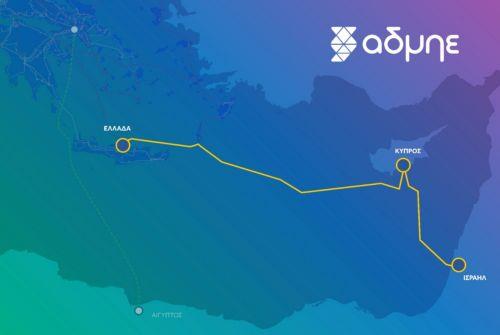OEV throws weight behind subsea electricity cable

The Employers and Industrialists Federation (OEV) have weighed in on the proposed subsea electricity cable linking the Cypriot grid to Greece, calling the project an opportunity not to be missed.
In a memo sent to the president, and made public on Monday, they said the Great Sea Interconnector – the commercial name for the cable project – will ultimately benefit the island on balance.
OEV noted that of all the island-nations in Europe, Cyprus is the only one without an electricity link.
They said that annual electricity consumption in Cyprus, currently some five million megawatt-hours, is projected to double over the next 25 years.
“The country’s future growth will depend on access to technology, and technology needs large quantities of electrical power.”
According to OEV, the mooted cable connecting Cyprus to Crete will have an output of 500 MW, plus another 500 MW as backup. It will be 900km long, reaching depths of up to 3km at its deepest point. Work will take about five years, with the cable going operational in early 2030.
Although the scale of the project and its long completion time, as well as potential unforeseen problems along the way may drive up the final cost, this is not out of the ordinary judging by other similar projects.
Total investment for the project is estimated at €1.94 billion, of which €657million provided in EU grants – leaving €1.243 billion to be jointly financed by Cyprus and Greece, at a split of 63 per cent and 37 per cent, respectively.
“This means that for the Republic of Cyprus/Cypriot citizens, it comes to €783 million, to be paid off in the long term.”
OEV next addressed the qualms expressed by local electricity producers, namely that the savings generated from bringing down the cost of electricity with the cable will be smaller than the savings generated from local production from renewables as well as fossil fuels – in other words, that the electricity produced in Cyprus might be cheaper for consumers than that offered through the cable, rendering the whole project moot.
If that does prove the case, said OEV, the project will still be useful for exporting electricity to Europe.
The federation also pointed out that amortisation of the investment will take about 35 years, with Cypriot consumers charged just 1 cent per kilowatt-hour on their total consumption, “a trivial amount when compared to the current price of electricity”.
In closing, OEV highlighted the pros of the project: “We have the chance to end our energy isolation, get on a trajectory to balance out the cost of electricity with the lowest rates in Europe, become important for our EU partners, and showcase our regional role.”
OEV’s intervention comes as the government mulls becoming an equity investor in the interconnector, to the tune of €100 million. It also comes amid concerns that the whole project may become unviable should Cyprus’ energy regulator stick to its guns on not allowing Cypriot consumers to pay a fee before the cable goes live.
